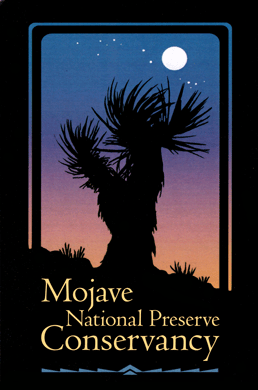So you made the trek to Joshua Tree. What else is there to see in the desert? The answer is ‘a lot.’
A tweet by Joshua Tree National Park urges visitors to consider other desert destinations to avoid crowds.
Joshua Tree National Park this winter encouraged its followers on Twitter to avoid the crowds there and escape to some of the other amazing desert wildlands in California, including the Mojave National Preserve. There is a reason Joshua Tree is literally trying to drive away visitors. Joshua Tree's visitation has increased significantly over the past few years as people flock to the park looking for solitude, wide open spaces, wildlife viewing, and a dark night sky. Nearly 2.5 million people visited Joshua Tree in 2016, compared to the Preserve's approximately 585,000 visitors. But Joshua Tree National Park cannot carry the desert's popularity alone, and those that visit may be disappointed if they find crowded campgrounds and lines of cars outside the entrance.
The Mojave National Preserve has more Joshua trees than Joshua Tree National Park!
Joshua Tree is a beautiful place but our southwestern deserts are immense and California is particularly blessed with three large desert national parks (JTNP, MOJA, DEVA), and several desert monuments and state parks.
But each desert park and monument is different from the other, and it's worth doing some research before hitting the road. So here are a few things you should keep in mind when planning a trip to the Mojave National Preserve:
1.) It's Big: The Preserve is nearly twice the size of Joshua Tree National Park (although both parks combined would still be smaller than Death Valley National Park!). The Preserve hosts an amazing array of ecosystems, from the small natural springs at Zzyzx that provide habitat for the endangered Mohave tui chub and vital water for bighorn sheep, to towering Kelso Dunes, old cinder cones and lava flows, a sprawling Joshua tree forest at Cima Dome, stands of giant yucca at Hole-in-the-Wall, and even some pine at the higher elevations. You can spend more than a day exploring here.
A visitor atop Kelso Dunes in the Mojave National Preserve.
2.) Arrive With a Plan: The Preserve is always open, but its visitor centers may not be. Also, visiting the Preserve is not like visiting Joshua Tree. There is no entrance station (or an entrance fee) where you receive a map and brochure upon entering the Preserve. There are two visitor centers within park boundaries, but each one is located well into the Preserve. You will have passed some awesome points of interest (sometimes without realizing it; the Preserve does not have as much signage and interpretive stations as JTNP) before you get to the Kelso Depot Visitor Center or the Hole-in-the-Wall Information Center. Also, check the hours for each visitor center as they may be closed during some weekdays. You should take advantage of the Preserve's official website to do some activity planning before you head out there.
3.) Plenty of Desert Solitude; Very Little Convenience: The Preserve has a couple of developed campgrounds at Hole-in-the-Wall and Mid Hills, as well as a handful of primitive camping spots along quiet dirt roads. However, unlike Joshua Tree, there is not a plethora of lodging options available within a short drive of the Preserve. As for food, there are no restaurants in the Preserve (until they find a concessioner to re-open the cafe at Kelso Depot). There are some highway outposts along Interstate 15 and Interstate 40 where you can load up on some fast food on the way in or out of the Preserve. Otherwise, pack what you need before you leave home. Also, keep an eye on your fuel gauge. The nearest gas station to the Hole-in-the-Wall Campground is a nearly 45 minute drive, each way.
Some roads should only be traveled with high clearance and four-wheel drive.
4.) Room for Adventure; Got 4x4?: There are plenty of miles of paved road in the Preserve that allow visitors to easily access many points of interest and a developed campground with a standard vehicle. Some dirt roads are maintained enough to allow for travel by a sedan without four-wheel drive. But the Preserve also has many miles of unimproved dirt roads that should only be traveled with a high clearance or four-wheel drive vehicle. Listen to your gut before you trust your GPS, and study maps ahead of time. If your GPS is sending you and your Volkswagen Jetta down a dirt road, think twice. If you have a high clearance vehicle or 4WD, check in with the rangers to inquire about road conditions, bring lots of water, and make sure someone else knows where you are going. Even the most experienced adventurers can run into car trouble in the backcountry, and you cannot count on cell phone service in portions of the Preserve.
5.) Take It Easy; Leave No Trace: As with Joshua Tree, the Preserve hosts an abundance of wildlife and natural beauty. It's easy to find yourself driving too fast when you're going down open highway in the Preserve; way too fast to spot a desert tortoise meandering down the pavement. So slow down, enjoy the fresh air, and keep an eye out for wildlife. Also, if you enjoy one of the Preserve's primitive camp sites, pack out what you packed in. Campfires are only allowed in established fire rings. Check out the Preserve's camping guidelines and regulations for more information. And if you see trash left by another visitor, please chip in by picking it up and taking it to the nearest trash can.
If you're going 75 MPH, you're not in the right mindset to enjoy the desert. Slow down. You'll enjoy the Preserve, and you'll pose less of a hazard to wildlife.
Check out the Mojave National Preserve's official website for more information!

